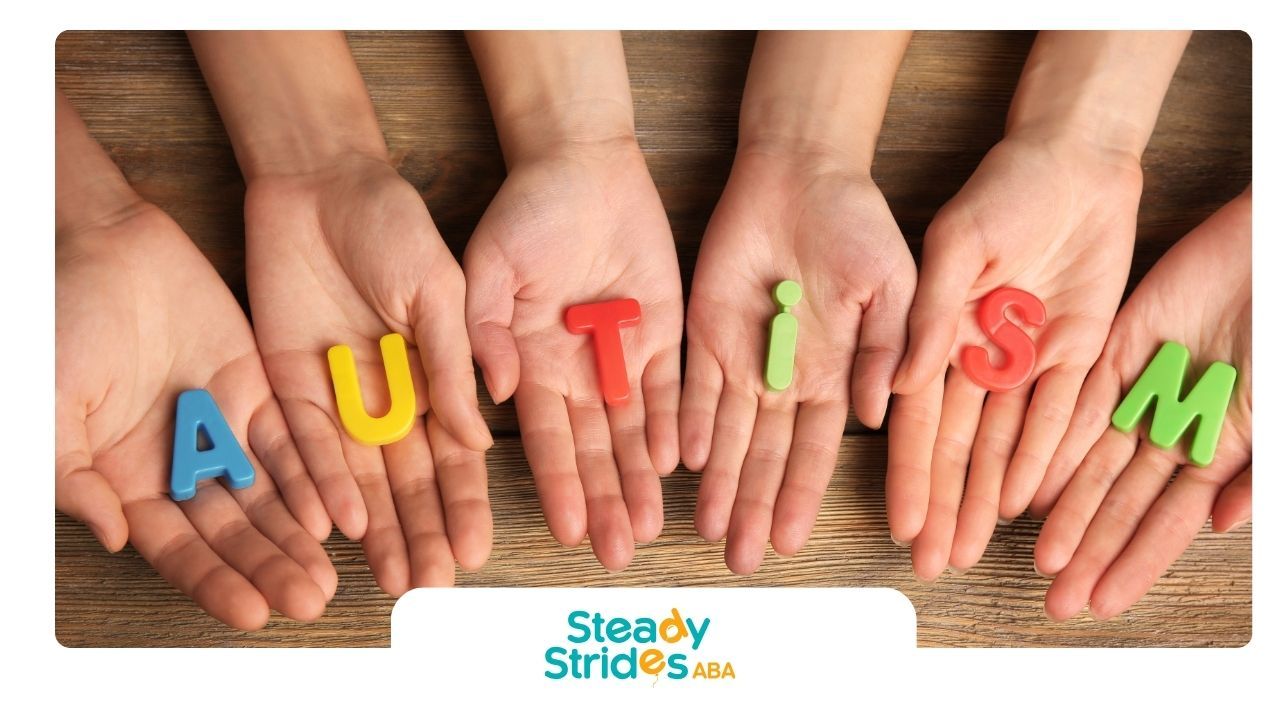Autism Spectrum Disorder (ASD) is a multifaceted neurodevelopmental condition encompassing a wide range of challenges, previously categorized as pervasive developmental disorders in older diagnostic manuals. This spectrum includes conditions like classic autism and Asperger syndrome, all marked by core difficulties in social interaction, communication, and often accompanied by repetitive behaviors. Within this spectrum, hyperactivity adds another layer of complexity, leading to a specific set of behaviors requiring specialized management approaches.
Identifying Hyperactive Behavior in Autistic Kids
Recognizing hyperactivity in children with ASD can be complex, as certain behaviors mimic those common in typical childhood development. However, when these behaviors are persistent, intense, and interfere with daily life, it signals the need for further investigation.
Autistic children with hyperactivity might display an inability to sit still, constant fidgeting, difficulties focusing on tasks, and impulsivity. They may have trouble transitioning between activities, exhibit frequent emotional outbursts, or engage in repetitive movements like hand-flapping or spinning. These behaviors go beyond typical childhood exuberance and significantly disrupt their ability to function effectively.
What Constitutes Hyperactive Behavior?
Hyperactivity, frequently linked to Hyperactivity Disorder (ADHD), involves ongoing patterns of inattention, impulsivity, and excessive energy levels. The symptoms of hyperactivity extend beyond simply being "energetic"—they indicate an underlying difficulty in regulating behavior and attention.
Children with hyperactivity often exhibit impulsive symptoms, acting without thinking, interrupting others, and struggling to wait their turn. They might find it challenging to sit still, constantly fidgeting, squirming, or leaving their seats. Attention deficit, another hallmark of hyperactivity, manifests as difficulty staying focused on tasks, being easily distracted, and struggling to follow instructions.
While the exact causes are multifaceted, research suggests that a lack of dopamine secretion—a neurotransmitter crucial for regulating attention and movement—plays a role. Furthermore, variations in brain structure and function, particularly in the frontal lobes responsible for executive functions, contribute to the manifestation of hyperactive behaviors.
Early Signs of Hyperactivity in Autistic Children
Detecting hyperactivity early in autistic children is vital for timely intervention. While some signs overlap with Attention Deficit Hyperactivity Disorder (ADHD), they often manifest differently in the context of ASD. Recognizing these nuances aids in appropriate diagnosis and management strategies.
For instance, while avoiding eye contact is a common sign of ADHD, in autistic children, it might stem from social communication challenges rather than inattention. Similarly, repetitive movements, often mistaken for hyperactivity, could represent self-stimulating behaviors aimed at regulating sensory input.
Here are some early signs of hyperactivity in autistic children to watch for:
- Extreme Restlessness: A constant need to move, even during quiet activities, and difficulty remaining seated.
- Frequent Emotional Outbursts: Heightened sensitivity to transitions, unexpected events, or changes in routine, often resulting in meltdowns or tantrums.
- Difficulty Engaging in Quiet Play: A preference for highly stimulating activities and short attention spans for activities that require focus and stillness.
Causes Behind Hyperactive Autism
Understanding the factors contributing to hyperactive autism paves the way for informed interventions. While the exact causes are complex and intertwined, research points to a combination of neurological, genetic, and environmental influences.
Neurological differences play a significant role. The brains of autistic children often process information differently, influencing their sensory experiences, motor skills, and ability to regulate emotions and impulses. Genetic predisposition also contributes, as specific genes influence the likelihood of developing both autism and hyperactivity.
Neurological Factors Contributing to Hyperactivity
Neurological factors play a crucial role in hyperactive autism, affecting how the brain processes sensory information, regulates emotions, and controls impulses. The frontal part of the brain, responsible for executive functions such as planning, organization, and impulse control, often functions differently in autistic individuals.
This executive dysfunction contributes to difficulties in inhibiting impulsive behaviors, sustaining attention, and managing transitions. Furthermore, atypical neural pathways might affect the production and transmission of dopamine, a neurotransmitter crucial for regulating attention, motivation, and movement.
These neurological differences don't mean an autistic child's brain is "faulty," but rather that it operates uniquely. Understanding this allows for the development of interventions that address their specific neurological needs rather than trying to “fix” them.
Environmental Influences on Behavioral Outcomes
While neurological and genetic factors lay the foundation, environmental influences can either exacerbate or ameliorate hyperactive behaviors in autistic children. Understanding these triggers and providing appropriate support is paramount for creating a more manageable daily life.
These environmental influences are diverse, encompassing daily routines, social interactions, and sensory stimuli. For instance, unstructured environments, sudden changes in schedule, or sensory overload can trigger heightened anxiety and stress, leading to hyperactive outbursts.
| Environmental Trigger | Potential Impact on Behavior |
|---|---|
| Sensory Overload (e.g., loud noises, bright lights) | Increased anxiety, irritability, meltdowns, or withdrawal |
| Unpredictable Routines | Heightened stress, difficulty transitioning between activities, emotional outbursts |
| Social Demands (e.g., large gatherings, unfamiliar people) | Social anxiety, withdrawal, or difficulty engaging appropriately |
Managing Hyperactive Symptoms in Autistic Kids
Managing hyperactivity in autistic kids requires a multifaceted approach that considers the individual's needs and strengths. Unlike typical hyperactivity, addressing hyperactive autism often necessitates strategies that address both ASD and attention-related challenges.
This can range from behavioral therapies that promote self-regulation and structure to environmental modifications that reduce sensory overload and create a calmer atmosphere. Collaboration between parents, educators, and therapists is crucial for creating a consistent and supportive environment that fosters the child's well-being.
Behavioral Strategies for Parents
Equipping parents with effective behavioral strategies is essential for managing hyperactivity in autistic children. Parent training programs play a crucial role in providing parents with the tools and techniques to support their child's emotional regulation and behavioral development.
These programs focus on practical strategies like establishing predictable routines, implementing visual schedules, and using positive reinforcement to encourage desired behaviors. Parents learn to identify triggers that escalate their child's hyperactivity and develop coping mechanisms to de-escalate challenging situations.
Beyond specific techniques, parent training offers valuable psychological support, enabling parents to navigate the emotional challenges of raising a child with hyperactive autism. Building a strong support network empowers parents to advocate for their child's needs effectively and foster a loving and nurturing environment.
Medication and Therapeutic Options
While behavioral strategies form the cornerstone of managing hyperactive autism, medication and therapeutic options may be considered in some cases to address specific symptoms. ADHD medication, often prescribed for its effectiveness in improving attention and reducing impulsivity, might be recommended under the careful supervision of a physician.
However, the use of medication in autistic children requires careful consideration of potential side effects and individual responses. It's not a one-size-fits-all solution and should always be part of a comprehensive treatment plan tailored to the child's unique needs.
Beyond medication, therapeutic interventions like occupational therapy, speech therapy, and social skills training can address sensory sensitivities, communication challenges, and social interaction difficulties, contributing to a holistic approach to managing hyperactivity in autistic kids.
Conclusion
In conclusion, prioritizing mental health is essential for overall well-being. By maintaining a healthy sleeping routine, being mindful of what you consume, engaging in therapeutic activities, and fostering a positive mindset, you can significantly improve your mental health. Remember, self-care is not selfish; it is necessary to lead a fulfilling and balanced life. Start caring for your mental health today to enjoy a happier and healthier tomorrow.
At Steady Strides ABA, serving families throughout Texas, we understand that hyperactivity can be a significant characteristic for some children with autism. This article offers valuable insights into the various ways hyperactive behaviors may present and explores the underlying factors, such as sensory processing differences. Our experienced team at Steady Strides ABA conducts thorough assessments to understand the individual needs of each child and develops tailored ABA therapy programs that address hyperactivity effectively. We focus on teaching self-regulation skills, providing structured activities, and creating supportive environments to help children manage their energy levels and improve focus. Steady Strides ABA is committed to providing compassionate and effective support in Texas, helping children with hyperactive autism behavior take steady strides towards greater calm and engagement.
Frequently Asked Questions
What is the difference between typical hyperactivity and hyperactivity in autistic kids?
While both may involve excessive energy and impulsivity, typical hyperactivity is often associated with Hyperactivity Disorder (ADHD). In contrast, hyperactivity in autistic children often manifests alongside other ASD symptoms like sensory sensitivities or communication difficulties, requiring different signs and considerations during assessment.
How early can hyperactive behavior be identified in autistic children?
Early signs of hyperactivity may emerge in a child's early years, even before a formal diagnosis of autism is made, usually around 2-3 years of age. However, recognizing these early signs as distinct from typical developmental behaviors is crucial for prompt intervention.
What are some effective home strategies to manage hyperactive behavior?
Effective home strategies often involve creating structured routines, minimizing sensory stimuli to prevent overload, using visual schedules, and providing outlets for energy release through physical activity. A systematic review of research suggested that these interventions are effective for younger and older children alike.
Source:
https://www.nimh.nih.gov/health/topics/autism-spectrum-disorders-asd#:~:text=Autism%20spectrum%20disorder%20is%20a,first%20two%20years%20of%20life.
https://www.nimh.nih.gov/health/topics/attention-deficit-hyperactivity-disorder-adhd
https://otsimo.com/en/autism-hyperactivity-connection/
https://www.columbiadoctors.org/treatments-conditions/attention-deficit-hyperactivity-disorder-autism-spectrum-disorder-and-learning-disabilities-pediatric
https://jewelautismcentre.com/jewel_blog/what-causes-a-child-with-autism-to-be-hyperactive-and-how-to-control-it/













